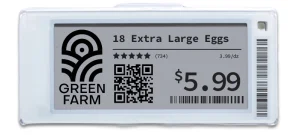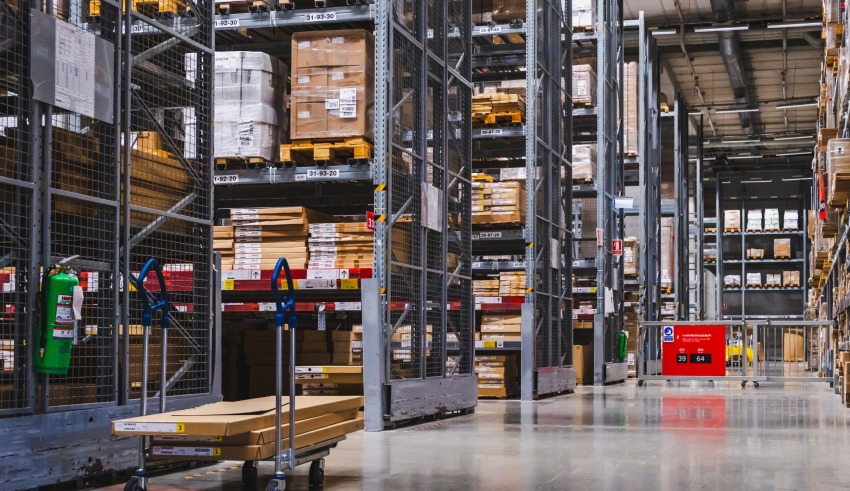
Designed to replace proprietary wireless protocols, it is based on Bluetooth technology and was created with companies involved in the market, such as such as SES-imagotag and Qualcomm Technologies.
Electronic shelf labels are typically small, battery-powered e-paper displays (pictured above), replacing paper labels to dynamically show product and pricing information at the shelf edge.
Electronic shelf label
The idea, of course, is to enable retailers to automate pricing and manage in-store operations more efficiently.
“The introduction of a wireless standard for the ESL market will unlock the next phase in retail digital transformation to deliver better outcomes for both stores and shoppers,” said Mark Powell, CEO of the Bluetooth SIG.
The SIG states Bluetooth ESL products will use new features released of the Bluetooth Core Specification Version 5.4 (a Technical Overview is here) as well as an upcoming Electronic Shelf Label Profile Specification that defines how to use these new features to create interoperable systems.
IoT
“Retailers are increasingly looking towards Internet of Things technologies to help them deliver operational efficiencies, increase conversion, and to encourage customers to return to stores,” said Andrew Zignani, Research Director at ABI Research.
“However, some retailers have been hesitant to adopt ESL technologies due to concerns over vendor lock-in, interoperability, scalability, and the ability to extend this to other smart retail initiatives. The introduction of the Bluetooth ESL standard will help reduce potential obstacles for retailers looking to invest in IoT technologies and accelerate adoption and innovation.”
You can read more about the new standard online.
See also: Viewpoint – Reliability, and Bluetooth overcoming interference with AFH







